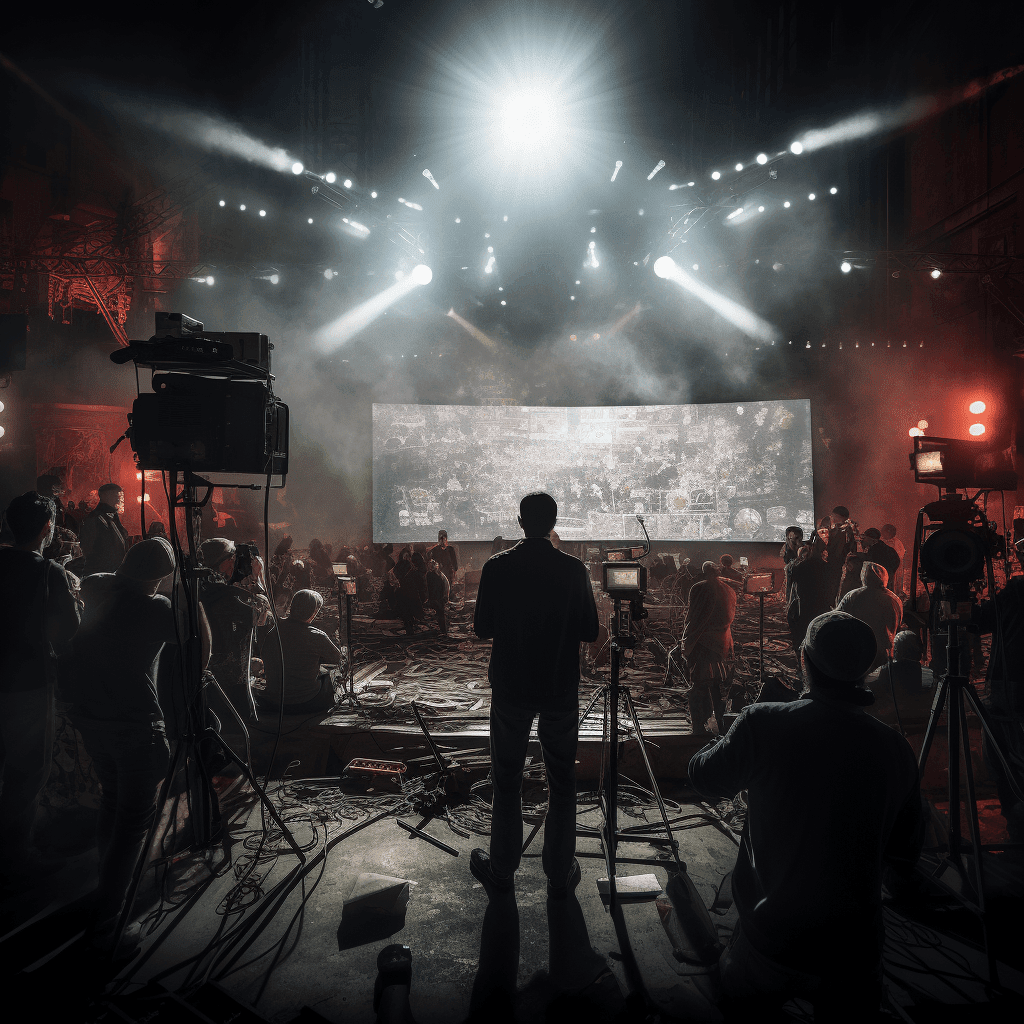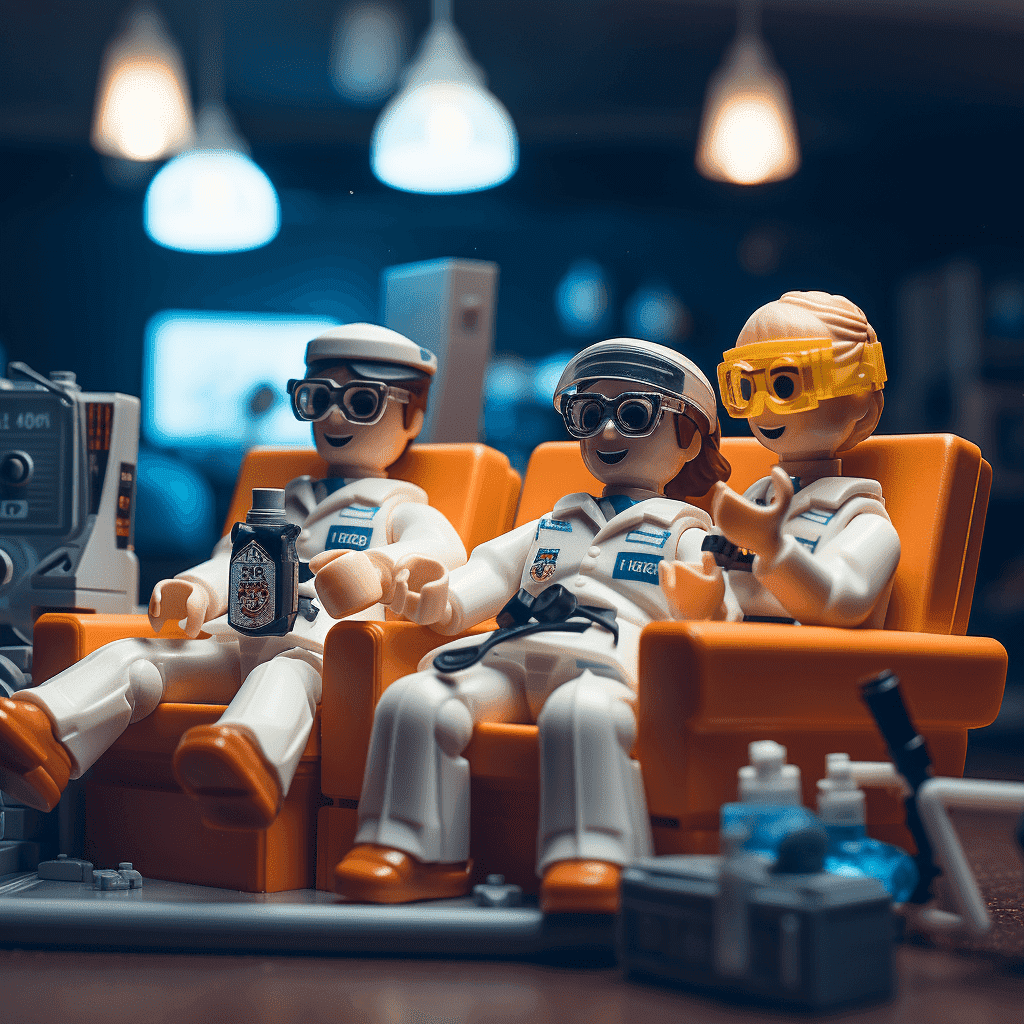What's After the Blog?
Criticism • Film Industry
The Significance of Opening Scenes in Movies
Delve into the significance of opening scenes in movies and how they shape the viewer's experience, set the film's tone, and establish narrative expectations.
June 28, 2024

Movies mentioned in this article
The Significance of Opening Scenes in Movies
Introduction: The Power of First Impressions
In the world of cinema, the opening scene is much more than just the start of a film; it’s a crucial element that shapes the viewer’s entire experience. These first few minutes are where filmmakers have the opportunity to make a powerful first impression, setting the tone, mood, and expectations for the story that unfolds. A well-crafted opening scene can captivate an audience, establish key themes, and introduce the narrative world in a way that resonates throughout the film. For instance, the opening sequence of Jaws masterfully sets up the suspense and horror that define the movie, while the whimsical opening of Amélie perfectly introduces the film’s quirky, magical tone. In The Godfather, the opening scene is a masterclass in setting the tone of solemnity and power, laying the groundwork for the film’s exploration of the Mafia world. This section of the movie is a critical moment where filmmakers can signal to the audience what they can expect, not just in terms of the plot, but also in the style, pace, and emotional journey of the film.
Crafting the Perfect Opening: A Director’s Vision
The opening scene of a movie is often a reflection of the director’s vision and storytelling style. Directors like Quentin Tarantino and Christopher Nolan are known for their distinctive approaches to opening scenes. Tarantino, for instance, uses his opening scenes to establish a unique narrative voice, often through witty dialogue and unexpected scenarios, as seen in the iconic opening of Pulp Fiction. On the other hand, Christopher Nolan often utilizes his opening scenes to immerse viewers into the complex, layered worlds he creates, like the disorienting dream heist in Inception or the gripping plane hijacking in The Dark Knight Rises. These directors understand that the first few minutes of a film are crucial in capturing the audience’s attention and setting the stage for the story. A director’s choice in how to open a film can range from a quiet, introspective scene that slowly draws the viewer in, to a dramatic, action-packed sequence that immediately grips the audience. The diversity in these approaches highlights the vast creative potential of opening scenes in cinema and their importance in establishing a connection with the audience right from the start.
Iconic Opening Scenes and Their Impact
Iconic opening scenes in movies are those unforgettable moments that stay with viewers long after the film has ended. They are powerful in setting the narrative, tone, and expectations. For example, the opening of Saving Private Ryan immerses viewers directly into the harrowing reality of war, setting a visceral and emotional tone for the film. The iconic beach landing scene is both harrowing and gripping, making it one of the most impactful openings in film history. Similarly, the dreamlike, eerie opening of Vertigo by Alfred Hitchcock masterfully sets the stage for its psychological exploration. In the world of animation, the opening sequence of Up is a poignant example, conveying a deep, emotional backstory without a single line of dialogue. These scenes are not only memorable but also critical in establishing the film’s overall narrative and thematic direction. They create expectations, evoke emotions, and draw the audience into the world of the film, demonstrating the immense power of a well-executed opening scene.
Setting the Stage: Establishing Characters and Setting
The opening scene of a film is often where the audience is introduced to the main characters and the setting of the story. This introduction is crucial as it shapes the viewer’s understanding and connection to the characters. In The Godfather, the opening scene at Don Corleone’s office not only establishes his character as powerful and respected but also sets the tone for the film’s exploration of family and power dynamics within the Mafia. The chaotic, colorful streets of Mumbai in the opening of Slumdog Millionaire immediately transport the audience to the protagonist’s world, setting the stage for his journey. In Forrest Gump, the simple act of a feather floating through the air landing at Forrest’s feet not only introduces Forrest in his most recognizable setting - on a bench - but also symbolizes the film’s themes of destiny and chance. These early moments are pivotal in creating a bond between the audience and the characters, and in immersing the viewer in the environment where the story unfolds. A well-crafted opening scene not only introduces the key elements of the narrative but also builds a foundation for the audience’s emotional investment in the story and its characters.
The Role of Music and Cinematography in Opening Scenes
Music and cinematography are pivotal in shaping the atmosphere of a film’s opening scene. They work in tandem to set the emotional tone and visual aesthetics, drawing viewers into the story from the first frame. A striking example is the opening of La La Land, where the vibrant, choreographed highway dance scene is elevated by its upbeat, jazzy score, instantly setting a whimsical, dreamlike mood. In contrast, the haunting opening of The Shining utilizes eerie music and sweeping aerial shots to create an unsettling atmosphere, foreshadowing the film’s psychological horror. The careful selection of music and visual elements in these opening scenes lays the groundwork for the film’s emotional and aesthetic experience. The iconic sunrise opening of The Lion King, with its powerful score and stunning visuals, not only captivates viewers but also highlights the film’s themes of nature and destiny. The synchronization of music and cinematography in these moments is not just about creating an appealing opening but about establishing a connection with the audience that resonates throughout the film.
The Question of Tone: “How do opening scenes establish the film’s tone?”
The opening scene of a movie is instrumental in establishing the film’s tone, giving the audience an insight into the world they are about to enter. For instance, the eerie silence and sudden chaos in the opening of Jaws instantly sets a tone of suspense and impending danger. In The Grand Budapest Hotel, the whimsical and meticulously crafted opening scene establishes the film’s quirky and stylized tone. These scenes set expectations for the narrative style and emotional journey of the film. A dark, brooding opening might prepare viewers for a serious, intense drama, while a light-hearted, humorous beginning might indicate a comedy. The tone set in the opening scene can also create thematic foreshadowing, as seen in Fight Club, where the dark, introspective opening narratively hints at the film’s exploration of identity and societal norms. The way a film opens not only sets the stage but also invites the audience into its unique world, providing a glimpse of what’s to come in terms of style, mood, and thematic exploration.
Opening Scenes in Different Genres
The opening scenes in movies vary significantly across different genres, each tailored to set the expectations and mood specific to that genre. In horror films, like The Conjuring, the opening scene often introduces an element of fear or suspense, setting the stage for the chills to follow. Comedy films, such as Superbad, typically open with humorous or quirky scenarios to establish a light-hearted tone. Dramas like American Beauty might start with a reflective or poignant scene, setting up the emotional depth of the story. Each genre uses its opening scene to not only hook the audience but also to give a taste of the film’s style and substance. Science fiction films, for example, might open with a scene that introduces the futuristic or alternate reality of the film, as seen in Blade Runner 2049. Romantic films, on the other hand, might start with a scene that highlights the central romantic theme, like the chance meeting of the protagonists in Before Sunrise. The effectiveness of an opening scene in any genre lies in its ability to immerse the audience in the film’s world right from the start, setting the tone for the narrative and thematic journey ahead.
The Question of Audience Engagement: “What makes an opening scene captivating for audiences?”
An opening scene becomes captivating for audiences when it successfully piques their interest, evokes emotions, and poses questions that keep them hooked for the rest of the film. A gripping opening scene is often a combination of intriguing storytelling, compelling characters, striking visuals, and emotive music. For instance, the intense opening heist in The Dark Knight grabs the audience’s attention with its high-stakes action and introduces the film’s main antagonist in a memorable way. In Inglourious Basterds, the tense and meticulously paced opening scene builds suspense and establishes the menacing character of Hans Landa. These scenes captivate audiences by creating a sense of intrigue, be it through action, dialogue, mystery, or a combination of these elements. The opening scene is the filmmaker’s first opportunity to engage the audience, and its effectiveness can set the tone for the viewer’s entire experience. It’s a moment where the film can make a powerful statement, introduce a perplexing puzzle, or simply immerse the viewer in a captivating world, ensuring they are invested in the story from the outset.
ATM’s Perspective on Opening Scenes
At ATM or the visually stunning introduction to Avatar, we aim to enrich the audience’s understanding and appreciation of these pivotal cinematic moments.
Conclusion: The Lasting Impact of Opening Scenes
The opening scenes in movies play a pivotal role in shaping the audience’s experience and perception of the film. They set the tone, introduce key characters, and establish the narrative world. These initial moments can make a lasting impression, often becoming some of the most memorable and discussed parts of a film. As cinema continues to evolve, the art of crafting impactful opening scenes remains a testament to the creativity and skill of filmmakers. From the suspenseful start of Psycho to the poetic opening of La La Land, these scenes demonstrate the power of cinema to captivate, intrigue, and emotionally engage audiences from the very beginning. The significance of opening scenes in movies is undeniable, and their impact resonates far beyond the initial viewing, contributing to the lasting legacy of the films they introduce.
Continue reading

What's After the Movie?
Not sure whether to stay after the credits? Find out!
Check out our other apps:
Actors
Companies
Latest Movies
© 2025 What's After the Movie. All rights reserved.




























